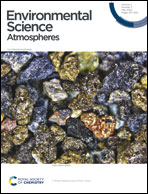Measuring the impact of air quality related interventions†
Abstract
As part of air quality management plans, administrative authorities commonly implement interventions, such as Low Emission Zones (LEZs) and Clean Air Zones (CAZs), to improve air quality. The associated benefits are often difficult to quantify due to the high variability in ambient time-series measurements and influence of contributions from meteorology, background and other emission sources. Break-point techniques have previously been used on their own to detect large changes, and in combination with deseasonalisation and deweathering methods to detect smaller changes. However, getting down to the detection limits needed to measure change at the levels predicted for most contemporary air quality interventions remains a challenge, as does the conversion of such higher-level analytical techniques into tools that are suitable for routine use by those tasked with the evaluation of interventions. Here, methods are presented that incorporate background subtraction to improve sensitivity and confidently quantify changes not readily detected in initial air quality time-series. Applied to air quality data collected in Leeds in the UK, the methods indicate a general reduction in the local NO2 contribution across the studied period, 01 January 2015 to 31 January 2019, but also superimposed on that two discrete reductions: the first 2.4 μg m−3 (0.03 to −4.8 μg m−3; 95% confidence) in late 2015, and a second of 3.6 μg m−3 (1.2–6.1 μg m−3; 95% confidence), equivalent to a 12% (4% to 21%; 95% confidence) reduction in ambient air that coincides with the period when the local 2018 bus fleet was upgraded to cleaner Euro VI vehicles.



 Please wait while we load your content...
Please wait while we load your content...